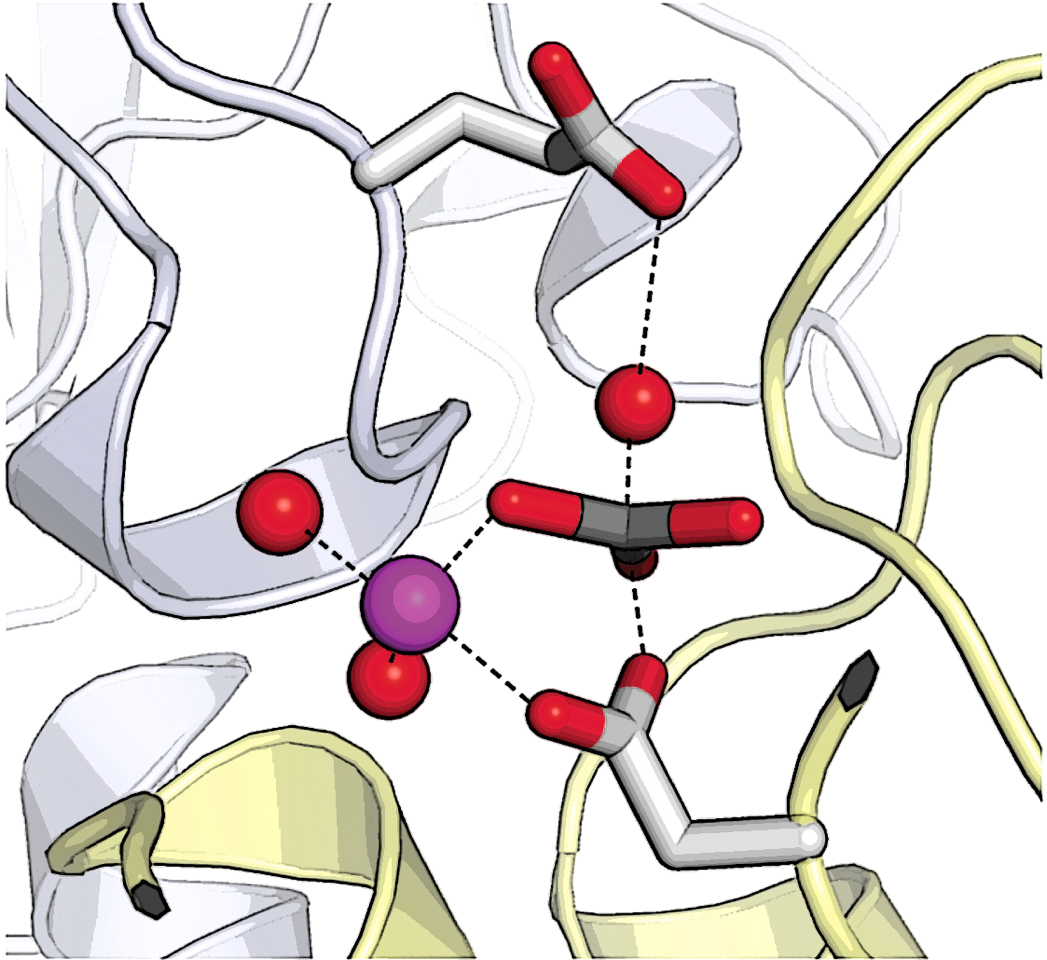A calcium pump caught in the act
Researchers at Aarhus University have described one of the cell’s key enzymes, the calcium pump, in its decisive moment – a so-called transition state where a catalyzed activity makes the turning point from bound substrate to product. These findings provide a very detailed picture of how one of the most energy-consuming processes in the body takes place. Calcium pumps are intimately involved in the activity of muscle, such as the heart, and therefore they are considered important targets for development of new drugs for cardiovascular diseases.

The enzyme is the calcium-pumping Ca2+-ATPase – an ion pump protein that maintains a concentration of calcium inside the cell, which is about 20,000 times lower than outside. Only, it does not pump the calcium ions out of the cell, but instead into a compartment in the cell called the sarco-endoplasmic reticulum.
Such a pumping activity requires energy – a lot of energy - which comes from a two-step cleavage of the energy-rich molecule called ATP. In fact Ca2+-ATPases and related ion pumps such as the sodium-potassium pump (Na+,K+-ATPase) spend about one-third of the ATP consumed in the body and up to 75% in the brain, since these large ion concentration gradients drive so many other processes in the cell, in fact quite similar to the electric power of a battery.
As a consequence of their vital importance, impaired activity of the ion pumps - such as by mutations or toxic compounds inhibiting them - is associated with diseases. Oppositely, the ion pumps can be targeted by medical drugs to alleviate ionic imbalances associated with disease, or they can be targeted in cancer cells or pathogenic organisms that then die. It is therefore very important to know how they work at an atomic level.
To gain such insight, the research team used X-ray crystallography after having crystallized the calcium pump in a state that mimics the last step of the ATP cleaving reaction. In this state, a phosphoenzyme middle-product is cleaved to liberate free phosphate as the final product of the ATPase reaction, and after calcium has been released into the sarco-endoplasmic reticulum store.
This step is closely mimicked by vanadate, where the phosphorus atom is replaced by vanadium and therefore produces a stable complex instead of a short-lived transition state. Like this a very accurate view of how the enzyme stabilizes the transition state and catalyzes the final step of the ATP cleavage reaction becomes available for detailed analysis.
This kind of insight is of key importance to our understanding of cellular processes of health and disease at a molecular level. Calcium pumps are intimately involved in the activity of muscle, such as the heart, and therefore they are considered important targets for development of new drugs for cardiovascular diseases. The calcium pumps are also associated with metabolism and energy consumption overall and therefore generally connected to health.
The two first authors on the paper have now moved on to new drug discovery research in the Danish biotech company Pcovery (Johannes Clausen), and as an associate professor at the University of Oxford (Maike Bublitz), respectively.
The study was published in the journal Structure:
http://www.cell.com/structure/pdf/S0969-2126(16)00077-0.pdf
For further information, please contact
Professor Poul Nissen
Department of Molecular Biology and Genetics/DANDRITE
Aarhus University, Denmark
pn@mbg.au.dk – +45 2899 2295
Dr. Johannes Clausen
Pcovery Aps , Ole Maaløes Vej 3
2200 København N, Denmark
jc@pcovery.com - +45 5159 4560
Dr. Maike Bublitz
Associate Professor of Microbial Biophysics
Department of Biochemistry, University of Oxford, UK
maike.bublitz@bioch.ox.ac.uk +44 1865 613221
